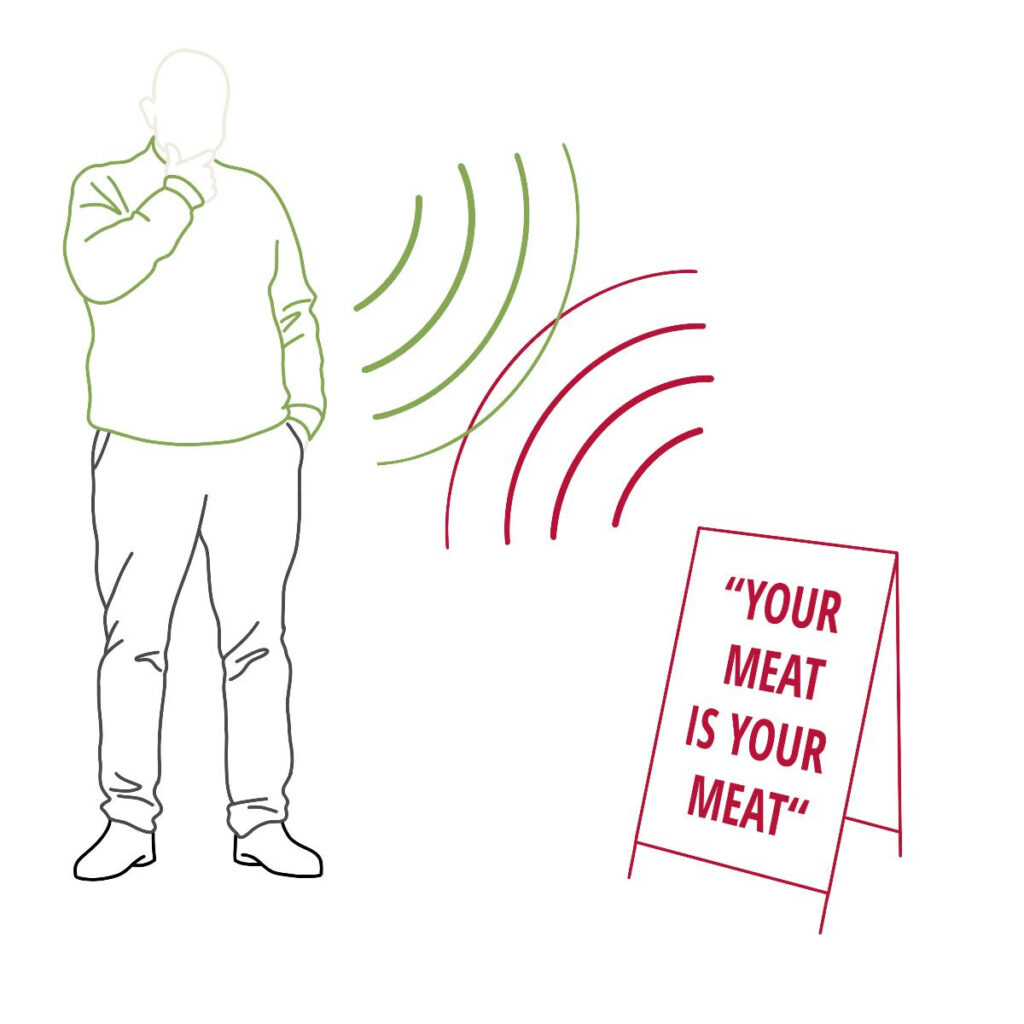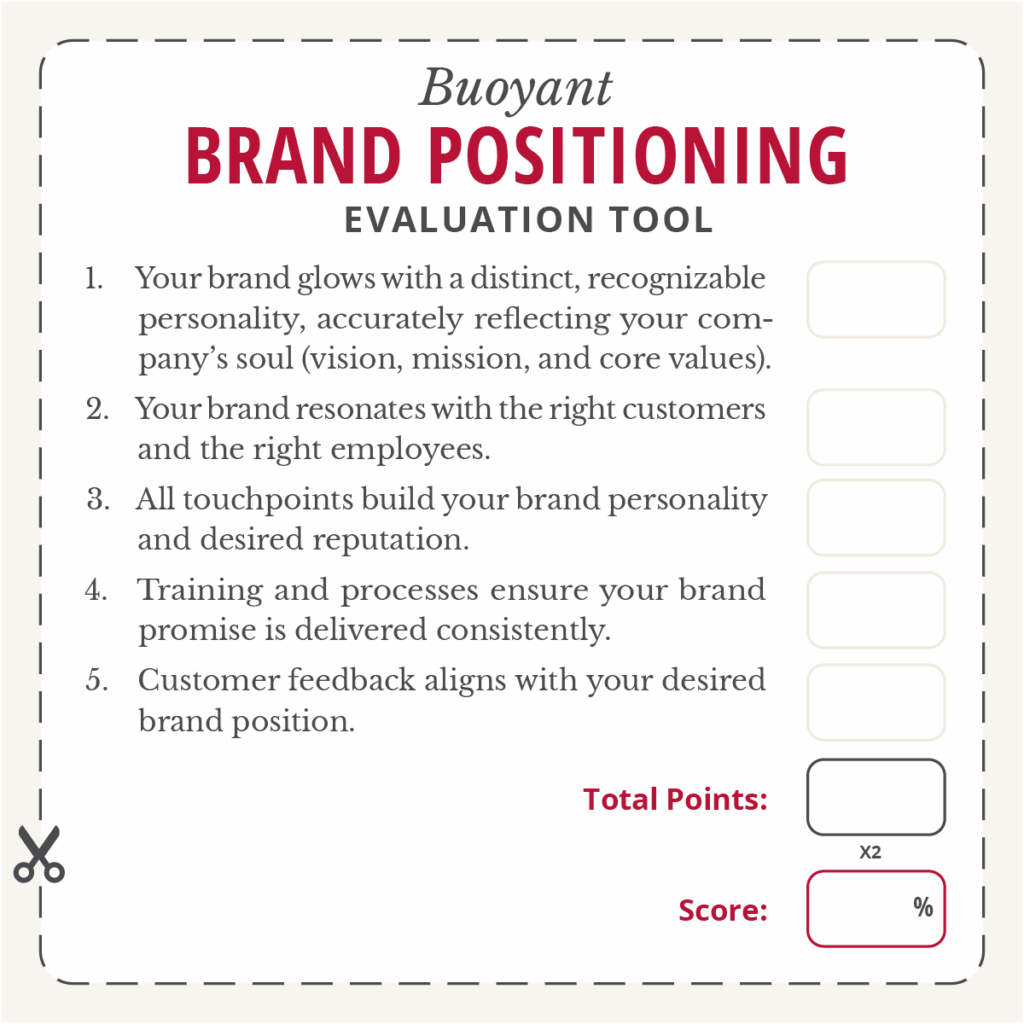“Daddy,” 10-year-old Meagan announced, “if you don’t get a deer today, I’m going to be so mad.”
“Mad?” Daddy replied to his frizzy-haired daughter, still in PJs. “Why would you be mad if I didn’t get a deer?”
“Simple!” Meagan responded. “Today’s the last day of deer season. If you don’t get a deer, nobody gets to go to Mike’s Meats. No snack sticks. No breakfast sausage! No backstraps! Remember how we had Uncle Marty over last year, and you both grilled those pre-seasoned backstraps from Mike’s? You’d better get a deer!”
“Who says we can’t go to Mike’s Meats if I don’t get a deer? He’s selling all that stuff up front now. Snack sticks – all flavors. Best breakfast sausage ever. Brats. Bacon bombs. Even backstraps! You can get it all.”
“But it’s not our own, and you know it. C’mon Dad! Please get a deer. We really need our own meat to do Mike’s right. To do Uncle Marty’s right. To do meat right.”
“You know what, Meagan,” Dad reflected, “You’re right! I’m going to do my best.”
Not going to Mike’s was one of the things Daddy had thought of, too, if he didn’t get a deer. Admittedly, he was getting pretty fond of the place, especially Mike’s “Bambi Breakfast Tartlets,” and Daddy planned to go there today, either way, deer or no deer. But Meagan didn’t know all that.
Sure, there were other butcher shops in town. Even some cheaper options. But frankly, in Daddy’s mind (and clearly Meagan’s too), Mike’s Meats was the only choice. And deer or no deer, hunting season was a good enough reason for dropping in.
What is branding?
Branding is your company’s reputation. It’s built on what you do (products and/or services) and how you do it (the way those products and services are presented). It encompasses employee behavior, the customer’s experience, and the manner in which the business presents itself.
Just as everybody has a personal reputation, so do businesses. Business branding is building and managing what people think, feel, and say about your company.
When Charles Dickens died, one lad in London asked, “Will we still be able to do Christmas?” Dickens’ bookA Christmas Carol was so widely read and so well received that young folks actually anchored the entire Christmas experience to the man! His story was so captivating and powerful that he had practically branded himself as Christmas in the hearts and minds of thousands.
In Johnstown, Pa, when the iron industry was full steam ahead, one Sunday School teacher asked, “Who created the world?” “Cambria Iron,” solemnly intoned a student, in all seriousness. To his perceptions, Cambria Iron was behind everything that was ever built. Indeed, before the Great Flood of 1889, the company’s facilities stretched 12 miles along the Conemaugh and Little Conemaugh rivers. Hearing the story, all the Cambria Iron executives likely smiled – they understood branding.
When Meagan thinks of deer hunting, she can’t help but think of Mike’s Meats. When Londoners thought of Christmas, Charles Dickens and his Scrooge held premium mental real estate. And when anyone from Johnstown would walk past a piece of infrastructure, “Cambria Iron” was sure to cross their mind. Effective branding makes the most of people’s logical and emotional connections.
Effective branding lifts a company to the top of people’s minds. Like a beach ball, the best branding is buoyant.
Buoyant branding is what makes a particular company rise to the surface first when thinking about deer hunting, automotive repair, plumbing needs, grocery outlets, tires, eyeglasses, fast food, sit-down restaurants, tool shops, fabric stores, toothpaste brands, vehicles, and well, practically everything out there in the big, wide marketplace.
Being top of mind, however, is not enough. The key to buoyant branding is being known by the right people, for the right things. Mike’s Meats was known by hunters for having stellar backstraps. Right on target! In other words, Mike’s Meats positioned their brand in the minds of their customers perfectly.
What are the key elements of buoyant brand positioning?
Brand positioning is “the act of designing the company’s offering and image to occupy a distinct place in the minds of the target market.” (Philip Kotler, author of Marketing Management.)
For your branding to be buoyant, it needs to echo the story your ideal customers are living. The best branding doesn’t just echo the story but even helps the customer understand their own story better. When people feel that the brand “gets” their situation, it strengthens their relationship with the brand. This strengthening can happen in three different but interconnected ways.

First, it gives the brand authority. Since the brand demonstrated expertise, I’m willing to grant the brand some level of standing as an expert in their field. Secondly, it builds trust. Because the brand understands me, I’m more likely to trust the brand and give it influence in my decisions. Thirdly, I like the brand. A brand that empathizes with me is a brand that I want as a friend.
Over time, as customers’ expectations are fulfilled, a buoyant brand and a reputation are developed. This creates both a logic-based and emotion-based magnet, repeatedly pulling hearts and minds into a deeper relationship with the brand.
Buoyant brand positioning communicates a promise–it clearly communicates what you will provide to your customers and how you will do it. The brand promise of Mike’s Meats grows out of their mission, vision, and core values: Bringing happy memories to the family table. In fact, in this case Mike’s Meats vision statement is their brand promise.
Try imagining your business brand as a person: what personality would it have? What clothes would it wear? What would its values be? How would it talk, walk, and act?
Mike’s Meats diligently promotes friendliness and warmth. All employees must treat meat with care and value. Everyone is encouraged to imagine the end point of the process–the family table with hearty “Mmm’s” all around, with lots of finger-licking and lip-smacking.
This brand personality is distinctly different from the large meatpacker or meat locker, where non-descript, non-anchored sides of beef are pushed unceremoniously through production processes to be whisked away to unknown distant markets. This model simply isn’t Mike’s and never will be.
How is brand positioning achieved?
Your name
A strong brand name is memorable, carries positive connotations that fit the aspects of your brand, and is easy to spell and pronounce. Recall a few popular businesses where these qualities are present: Dunkin’ Donuts, Kleenex, Amazon, Home Depot, or Snickers.
Your logo
Perhaps this is where your thoughts went when you began reading about business branding. It is one component of the whole. Your logo is a symbol that represents you everywhere it travels. Like a brand name, it should carry positive emotion and connotation that will resonate with your target market.
The best logos are both simple and expressive. Picture in your mind the logos for the following businesses: John Deere, McDonald’s, Nike, and Amazon. Amazon’s logo demonstrates terrific simplicity and great expression: an arrow from the A to the z communicates a comprehensive product line (“from a to z”), satisfaction (a smile formed by the arrow), and forward conveyance appropriate for a distribution company.

Your brand theme.
This is identifiable by colors, fonts, and visual styling. Colors carry emotions and connotations; while some are lively and energetic, others are calm and soothing. Some color combinations have a masculine appearance, while others appeal more to women.
Your slogan or tagline.
A short, memorable statement can be used to reinforce or explain what you do for a customer. Here are a few examples of taglines; maybe you can match them to a company.
“Nothing Runs Like a Deere”
“Save Money. Live Better”
“Making Electricity Work for You”
“Good to the Last Drop”
“The World’s Foremost Outfitter”
Your consistency and integrity.
It’s possible to build a presentation tailored to fit a customer, yet not align with what you have said you are going to be. A buoyant brand position cannot be achieved without serious actions within your business, strategically aligned with the message. Actions will always speak louder than words.
A customer must consistently receive the same level of service excellence or the same quality of product each time they interact with you. Your brand theme should be consistently applied through all marketing touchpoints, such as signage, vehicles, uniforms, documents, and most importantly, the customers’ experience.
Consistency also applies to dress; many businesses have uniforms and dress codes to keep employee presentation consistent with the brand position.
If your brand correctly identifies you and your customers’ experience, you have achieved brand integrity. If your products are inferior, your customer service is weak, and your workmanship shoddy, it’s a breach in integrity with what you are messaging to your potential clients. This is hard on your reputation, of course, and will weaken your brand.
In summary, buoyant brand positioning is achieved by all the touchpoints of a customer’s experience aligning with a clear message of what you do and how you do it. Employees must be both hired and trained in alignment with your brand position, for they are the ones carrying out your vision, mission, and behaving in accordance with your core values.
How it works at Mike’s Meats
How did Mike’s Meats gain a significant place in the heads and hearts of Meagan and her Daddy? It didn’t happen overnight, and they are still working at it. Here’s a brief overview straight from Mike’s big yellow scratch pad of the components that determine and guide him in his ongoing branding functions.
Company soul:
- Vision: “Bringing happy memories to the family table.”
- Mission: “Making legendary meat products.”
- Core Values: “SMS”
- Safety—for food and fingers
- Memories—Fondness feeds friendship
- Senses—Flavor plus four (smell, touch, sound, sight)
Core message:
- 1. “Your meat is your meat.”
- 2. “Flavor to rave over.”
- 3. “Re-live your memories.”
Slogan:
- “Delicious meats are the best kind of memory.”
Touch point applications:
- 1. Hunting and farming themed decor/vibe in retail space.
- 2. Work order checklist showing who did what and when, sent with finished product. Identification tags affixed to the carcass in the customer’s presence.
- 3. Large windows between the retail space and the work floor area.
- 4. Free recipe / seasoning recommendations for every cut of meat.
- 5. Consistent warmth and smiles, coupled with an invitation for the customer’s story behind the animal.
- 6. Packaging detail: free boxes with business name, logo, and slogan. Full-color, personalized labels, such as “Bob’s Elk Steaks” and “Jr’s Wild Steer Sticks.”
- 7. “Your meat is your meat” guarantee or it’s free!
Evaluate your business
Here is a simple evaluation tool for evaluating your brand positioning. For each of the five areas listed, rate yourself on a scale of 1 – 10, 10 being great – no improvement necessary, and 1 being poor – hardly even working at it.

1. Playing to Win: How Strategy Really Works by A.G. Lafley and Roger L. Martin, copyrighted 2013 by Harvard Business Review Press